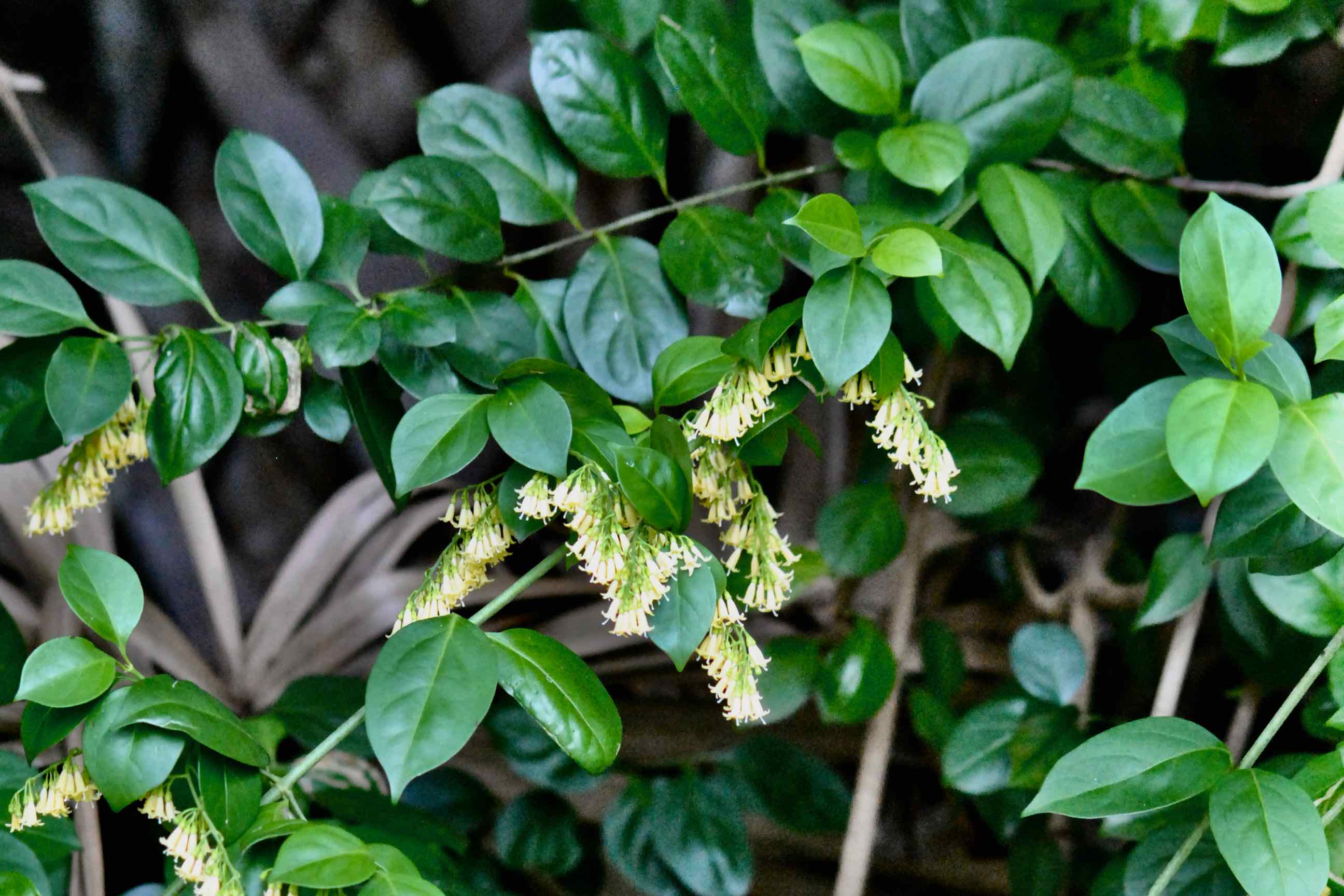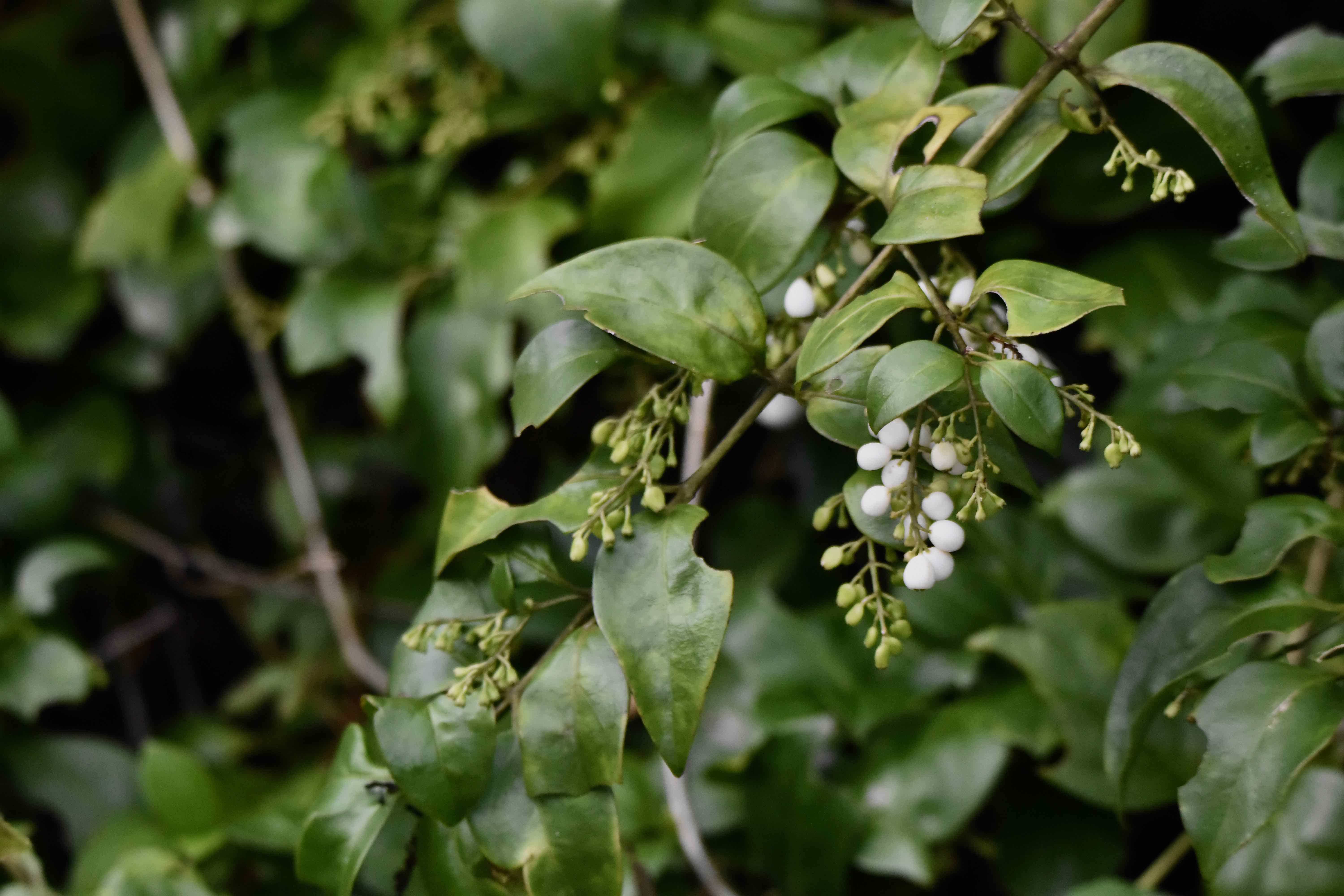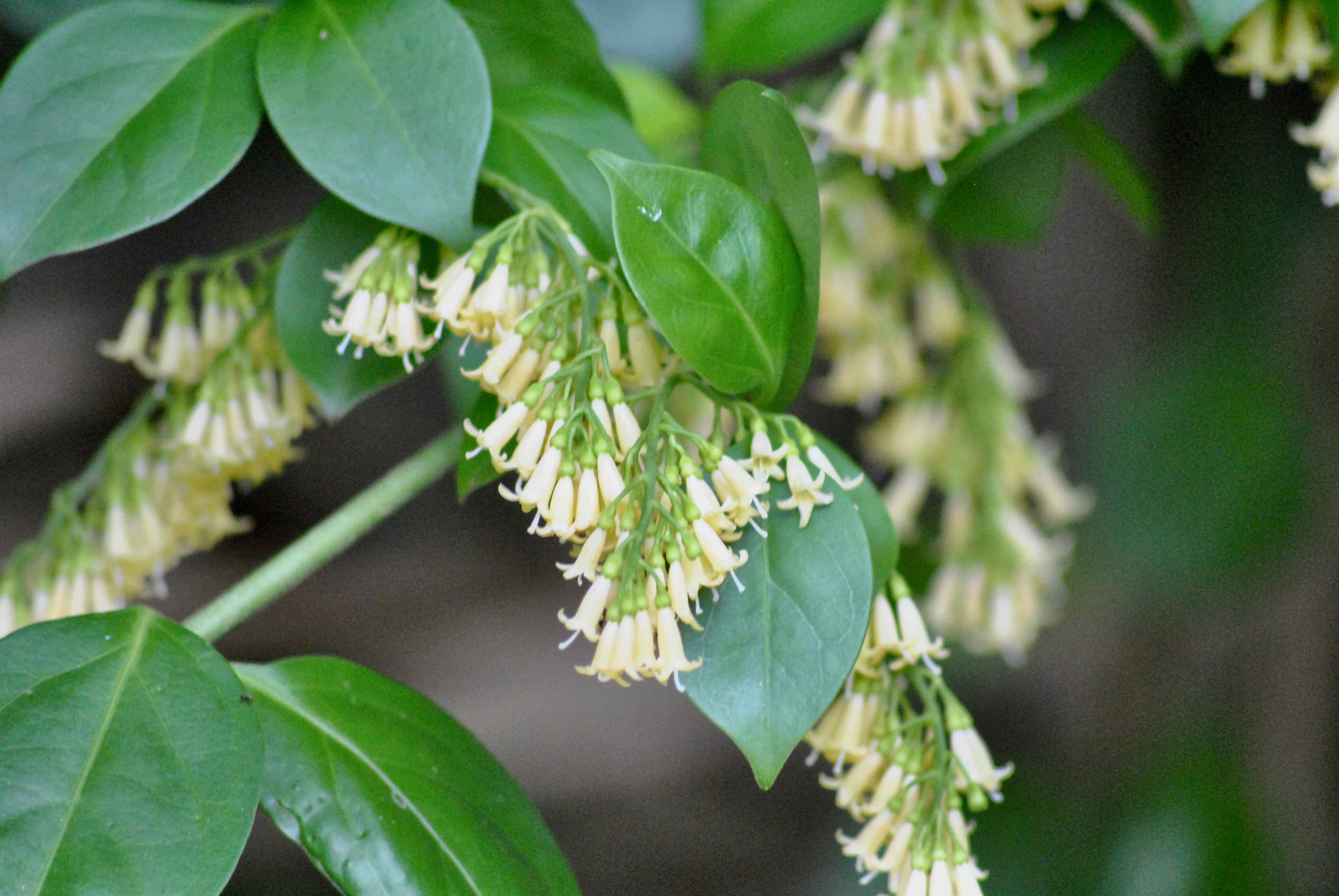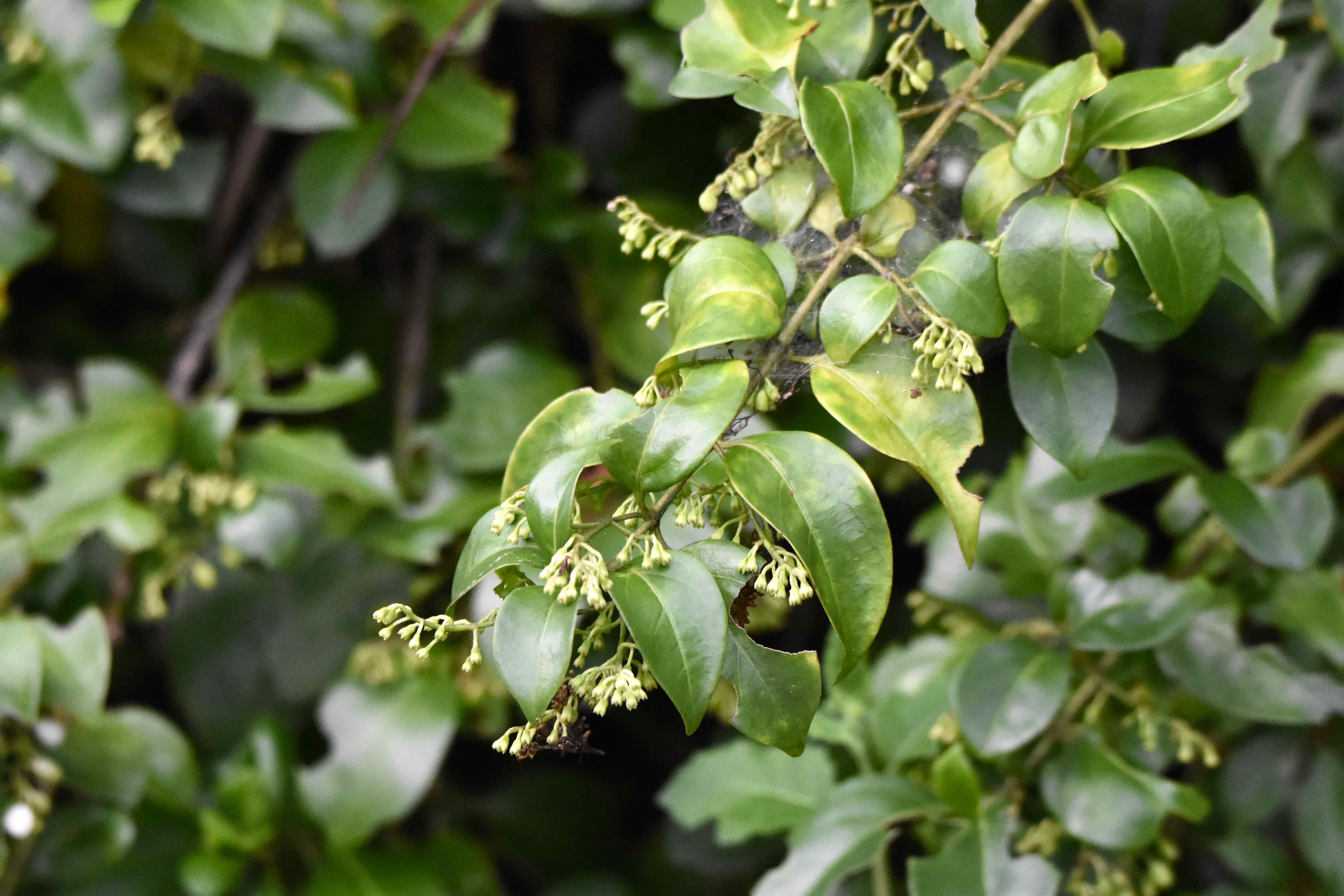
Snowberry, photographed at Ocean Ridge Natural Area, Ocean Ridge, Palm Beach County, in September 2013.
Snowberry, Chiococca alba, is a rather odd name for a plant that grows only in very warm places and where the white stuff almost never falls from the sky. But the berries it produces are as pure white as the driven snow, so to speak.
Snowberry is part vine, part shrub, native to Florida, extremely southern Texas, the Caribbean, Central America and South America. In Florida, its range is u-shaped along the coasts of the Peninsula from the Jacksonville area nearly to the Big Bend. It's found in only one interior county.
It's clambering plant, usually growing between six and 10 feet tall but can reach 25 feet under the right conditions. But in order to attain any height, it needs support, something to grow on. The leaves are oval shaped, two to four inches long and arranged opposite each other (in pairs) along the stem. It is a perennial.
What stands out most about snowberry are the flowers and the white berries that inspire the plant's name. The flowers are tubular, white turning yellow as they age. They form large clusters called racemes that give the plant a spectacular look. They bloom throughout the year, followed by small berries that are pure white. The combination makes snowberry attractive as a landscaping plant.
Natural habitats include hammocks and thickets. It likes shady places or partial shade, and moist soils.
Snowberry is a source of food for birds, who eat the berries, and butterflies, who nectar from those tubular flowers. It's said to be a source of food for the incredibly rare Miami blue butterfly. Snowberry also provides cover for wildlife.
Snowberry is grown commercially and used in restorations, natural landscapes and as a buffer planting. The upside is the plant's good looks; the downside, according to the Institute for Regional Conservation, is it can be aggressive.
We humans have found snowberry to have other uses, particularly medicinal. In traditional herbal medicine, it's been used to treat rheumatism and snakebites.
It's also been used to treat asthma, coughs and diarrhea and as a laxative, diuretic and to induce vomiting. The active ingredient in snowberry apparently is methyl-salicylate, a substance the plant produces when attacked by leave-eating insects. The stuff apparently attracts carnivorous insects who then eat the bugs attacking the plant. Methyl-salicylate is used in perfumes, in foods to provide fragrance and in linaments. It's also toxic, deadly if taken in sufficient quantities. The root, particularly root bark, is the part of the plant that was used.
Among the lengthy list of other common names for snowberry: milkberry, West Indian milkberry, West Indian snowberry, David's milkberry, David's root (we have no idea who David might be), cahinka and cahinka root. It is a member of Rubiaceae, the coffee family. Note: there is at least one other plant, unrelated, that is known as snowberry, Symphoricarpos albus, so check the scientific name to be sure you're dealing with our guy.
Click on photo for larger image
Links for Snowberry



